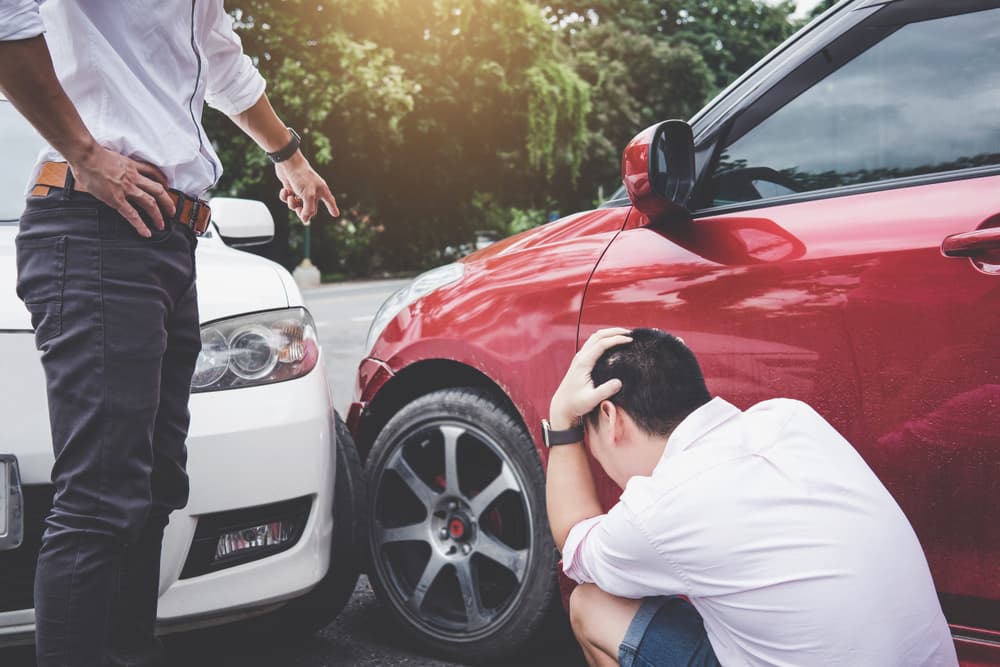Rear-end accidents are among the most common car crashes on the road. They occur when one vehicle collides with the back of another, often resulting in property damage, injuries, and even fatalities.
Determining fault in a rear-end accident can be complicated, as several factors require consideration. Have a car accident attorney evaluate your crash to identify who should be at fault and liable for your losses.
Understanding the Basics of Rear-end Accidents
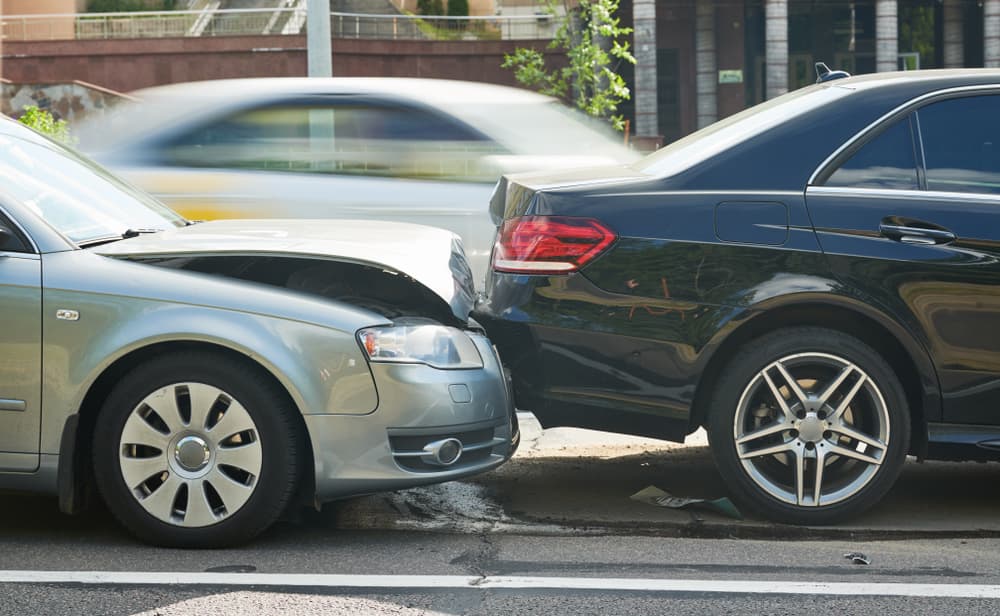
A rear-end accident happens when the front of one vehicle strikes the rear of another vehicle. These accidents can occur at stop signs, traffic lights, or even on highways when traffic suddenly slows down or comes to a halt. The impact of a rear-end collision can range from minor damage to severe injuries, depending on factors like the speed of the vehicles involved and the size difference between the cars.
In most cases, authorities presume the driver of the rear vehicle to be at fault for a rear-end accident. Traffic laws generally require drivers to maintain a safe following distance and be prepared to stop when necessary. However, this rule has some exceptions, and a car accident attorney can identify these as they apply in your situation.
Common Causes of Rear-end Accidents
Several factors can contribute to the occurrence of a rear-end accident. Some of the most common causes include:
Distracted Driving
Distracted driving has become one of the most significant contributors to rear-end accidents in recent years. With the increasing prevalence of smartphones and other electronic devices, drivers are more tempted than ever to take their eyes off the road.
When drivers are not paying full attention to their surroundings, they may fail to notice when the vehicle in front of them slows down or stops, resulting in a rear-end collision.
Distractions can come in many forms, such as texting, making phone calls, eating, drinking, or applying makeup. Even a momentary glance away from the road can have disastrous consequences.
Studies have shown that sending or reading a text message can take a driver’s eyes off the road for an average of five seconds, which, at 55 miles per hour, is equivalent to driving the length of a football field with your eyes closed.
Tailgating
Tailgating, or following another vehicle too closely, is a dangerous habit that significantly increases the risk of rear-end accidents. When drivers fail to maintain a safe following distance, they reduce the time to react and brake when necessary. If the vehicle in front of them suddenly slows down or stops, the tailgating driver may not have enough time to avoid a collision.
The recommended safe following distance varies depending on speed, weather conditions, and vehicle type. A general rule of thumb is to maintain a following distance of at least three seconds behind the vehicle in front of you.
Choose a fixed point on the road ahead, such as a sign or overpass, to determine your following distance. When the rear of the vehicle in front of you passes that point, start counting seconds. If you reach the same point before counting to three, you follow too closely and should increase your following distance.
Tailgating is dangerous and illegal in many states. Drivers caught following too closely may face fines, points on their license, and legal liability if their actions result in a rear-end accident.
Speeding
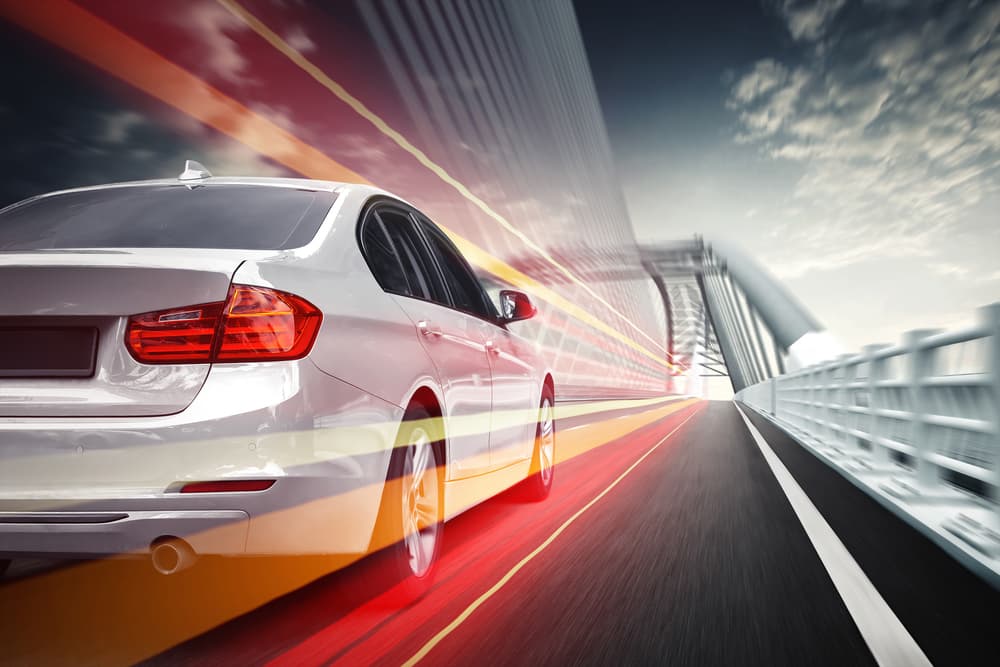
Speeding is a major contributing factor to the occurrence and severity of rear-end accidents. When drivers travel at excessive speeds, they have less time to react to changes in traffic conditions and require more distance to stop. This means that if the vehicle in front of them suddenly slows down or stops, a speeding driver cannot avoid a collision.
Moreover, the force of impact in a rear-end accident increases exponentially with speed. A collision at high speeds is much more likely to result in severe injuries or fatalities than one at lower speeds. This is because the amount of kinetic energy that vehicles and their occupants must absorb increases with the square of the velocity.
Poor Weather Conditions: How Rain, Snow, and Fog Contribute to Rear-end Collisions
Inclement weather can significantly increase the risk of rear-end accidents by reducing visibility and making roads slippery. When driving in rain, snow, or fog, take extra precautions to ensure your safety and the safety of others on the road.
Rain can reduce tire traction, making it more difficult for vehicles to stop quickly. It can also impair visibility by causing glare and reducing contrast, making it harder for drivers to see the vehicles in front of them. In heavy rain, hydroplaning can occur, causing vehicles to lose contact with the road surface and increasing the risk of a rear-end collision.
Snow and ice can create even more treacherous driving conditions. When snow or ice accumulates on roads, tire traction greatly reduces, making it more difficult for vehicles to accelerate, brake, and turn. Drivers who fail to adjust their speed and following distance to account for these conditions are at a higher risk of being involved in a rear-end accident.
Fog can also contribute to rear-end collisions by reducing visibility and making it difficult for drivers to judge the distance and speed of other vehicles on the road. In dense fog, drivers may not see a stopped or slowed vehicle until it’s too late to avoid a collision.
To minimize the risk of rear-end accidents in poor weather conditions, drivers should reduce their speed, increase their following distance, and use their headlights and fog lights when necessary. If conditions become too dangerous, they should pull to a safe location and wait for the weather to improve.
Drivers do not always take these proper actions, however, often leading to crashes and liability.
Mechanical Issues: How Vehicle Malfunctions Can Lead to Rear-end Accidents
While driver error is the most common cause of rear-end accidents, mechanical issues can also contribute. When a vehicle’s brakes, tires, or other critical components fail, the driver cannot stop in time to avoid a collision.
Faulty brakes are among the most dangerous mechanical issues in rear-end accidents. If a vehicle’s brakes are improperly maintained or fail unexpectedly, the driver cannot stop in time to avoid hitting the vehicle in front of them. This is especially true if the driver follows too closely or travels high speeds.
Tire blowouts can also contribute to rear-end accidents, causing the driver to lose control of their vehicle. When a tire fails, it can cause the vehicle to swerve or skid, making it difficult for the driver to maintain a safe following distance or stop in time to avoid a collision.
Other mechanical issues that can lead to rear-end accidents include malfunctioning taillights or brake lights, which can make it difficult for following drivers to know when the vehicle in front of them is slowing down or stopping.
Determining Fault in Rear-end Accidents
As mentioned earlier, the rear driver is typically presumed to be at fault in a rear-end accident. This is because they are responsible for maintaining a safe following distance and being prepared to stop when necessary. However, there are some situations where the lead driver may be found partially or entirely at fault for the accident.
One such scenario is when the lead driver suddenly reverses without warning, causing the rear driver to collide with them. In this scenario, the lead driver may be held responsible for failing to ensure that it was safe to reverse and not giving the rear driver sufficient time to react.
Another example is when the lead driver’s brake lights are not functioning correctly, making it difficult for the rear driver to know when they are slowing down or stopping. If the rear driver can prove that the lead driver’s negligence in maintaining their vehicle contributed to the accident, the lead driver may be found partially at fault.
Additionally, if the lead driver suddenly swerves into the rear driver’s lane without signaling or providing enough space for the rear driver to avoid a collision, they may be found at fault for the accident.
These situations can be complicated, and you always want a car accident attorney proving fault in your accident, whether it is the rear or lead driver.
Gathering Evidence to Prove Fault in a Rear-end Accident
If you’ve been involved in a rear-end accident and believe the other driver was at fault, it’s time to gather evidence to support your claim.
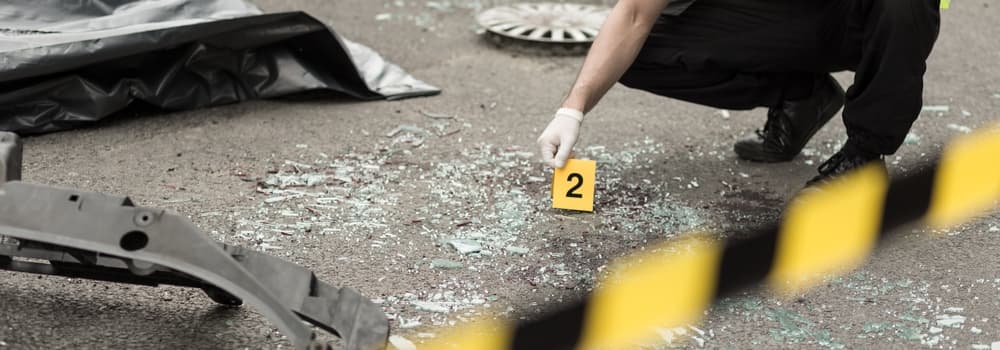
Some key pieces of evidence that can help prove fault include:
- Police report: If the police arrived at the accident scene, they might create a report that includes their assessment of what happened and who they believed was at fault. This report can be valuable evidence in your case.
- Witness statements: If there were any witnesses to the accident, their testimony can help corroborate your version of events and provide valuable insight into who was at fault.
- Medical records: If you sustained injuries in the accident, your medical records can help establish the extent of your damages and link them to the collision.
Potential Damages Available to Victims of Rear-end Accidents
You can be entitled to various damages if you’ve suffered an injury in a rear-end accident caused by another driver’s negligence. These compensate you for your losses from the accident and aid your financial, physical, and emotional recovery.
Here are some of the potential damages that may be available to victims of rear-end accidents:
Medical Expenses
If you’ve suffered an injury in a rear-end accident, you can recover reimbursement for your medication, doctor’s visits, hospital bills, physical therapy, and any other treatment related to your injuries. This covers both current and future medical expenses that you expect.
Lost Income
If your injuries have caused you to miss work or lose earning capacity, you may be entitled to compensation for your lost income. This includes the income you’ve already lost and any future income you will likely lose due to your injuries.
Pain and Suffering
You can recover non-economic damages for your pain and suffering. This includes payment for the physical pain, emotional distress, and loss of joy from the accident.
Property Damage
Suppose the rear-end accident damaged your vehicle or other personal property. In that case, you may be eligible for compensation for the repair or replacement costs and any associated expenses, such as rental car fees or temporary transportation needs. Contact a skilled car accident attorney today to assess your situation and pursue the compensation you deserve.
Punitive Damages
In some circumstances, if the driver who caused the accident was particularly reckless or acted with intentional malice, you might be entitled to punitive damages. These damages punish the wrongdoer and discourage similar conduct in the future.
The specific damages available to you will depend on the facts of your case and the laws of your state. Some states have caps on certain types of damages, while others may require you to meet certain thresholds before you can recover non-economic damages like pain and suffering.
Maximizing Your Compensation
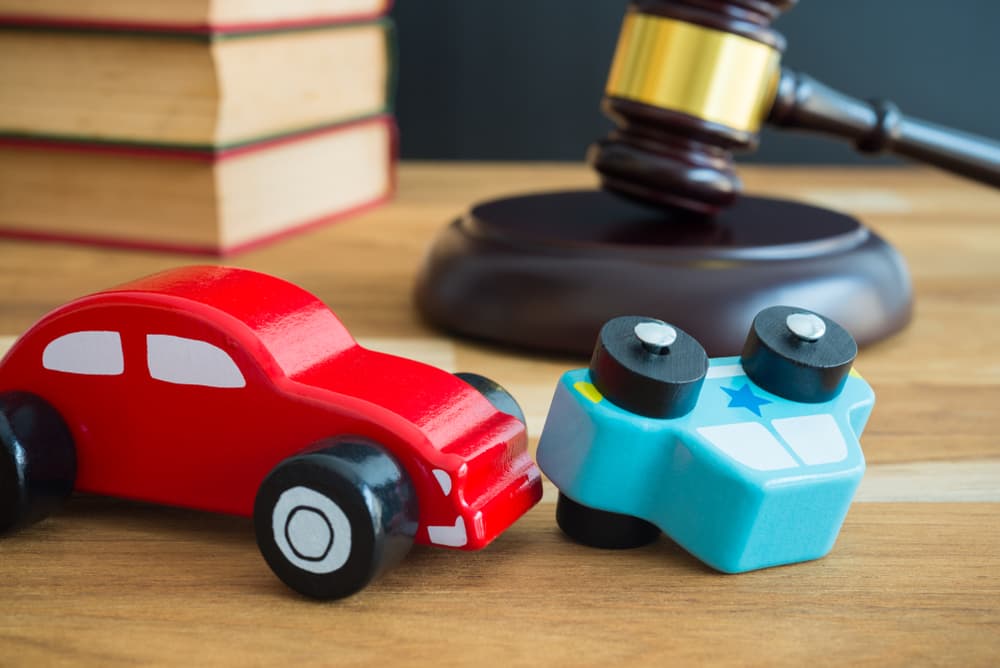
To maximize your chances of recovering the full compensation you deserve, work with an experienced car accident lawyer who can build a strong case on your behalf. Your lawyer can gather evidence, negotiate with insurance companies, and pursue all available avenues for recovery.
In addition to seeking compensation through a personal injury lawsuit, you can recover damages through your insurance policy if you have uninsured/underinsured motorist coverage or medical payments coverage. Your lawyer can guide you in your options and take the most appropriate action for your situation.
Time Limits for Personal Injury Claims
Keep in mind that there are time limits for pursuing a personal injury claim after a rear-end accident. These time limits, known as statutes of limitations, vary by state and can be as short as one year from the date of the accident.
Delaying legal action can result in losing the opportunity to recover any compensation. That’s why speaking with a lawyer as soon as possible after a rear-end accident to protect your rights and preserve your ability to recover damages.
Contact a Car Accident Lawyer
If you or a loved one has experienced a rear-end accident, don’t hesitate to seek the assistance of an experienced personal injury lawyer. A lawyer can provide the guidance and support you need and fight for the compensation you deserve.
Contact a knowledgeable and compassionate lawyer today to discuss your case and learn more about your legal options.
 Calls Answered 24/7
Calls Answered 24/7
